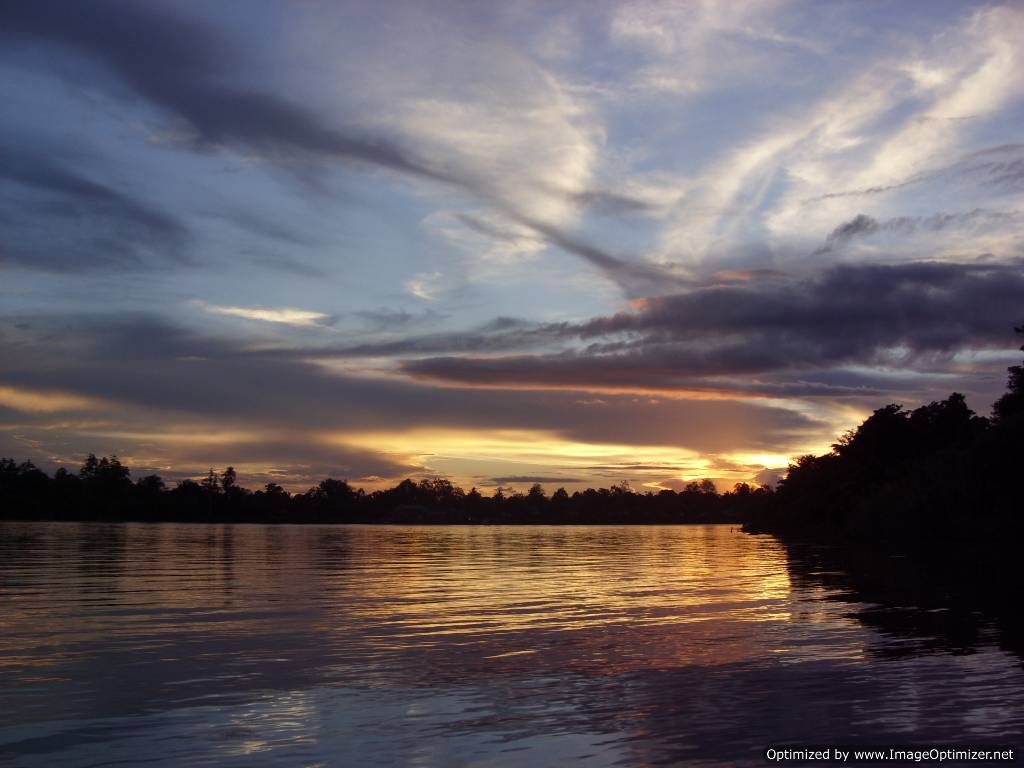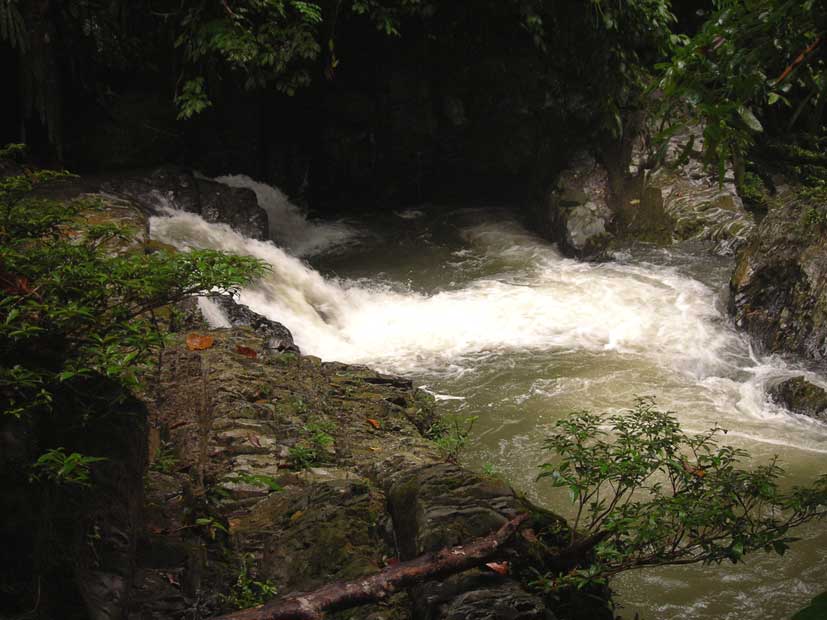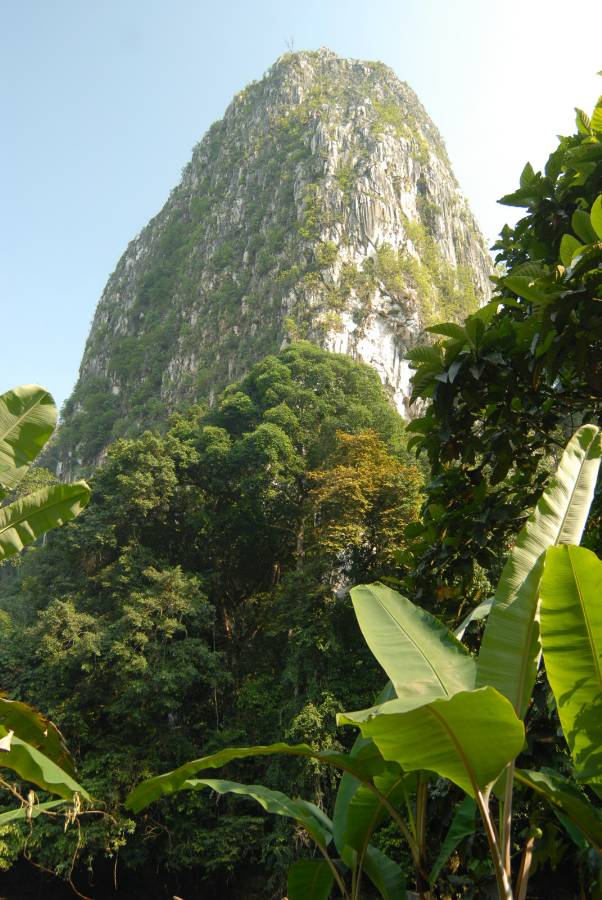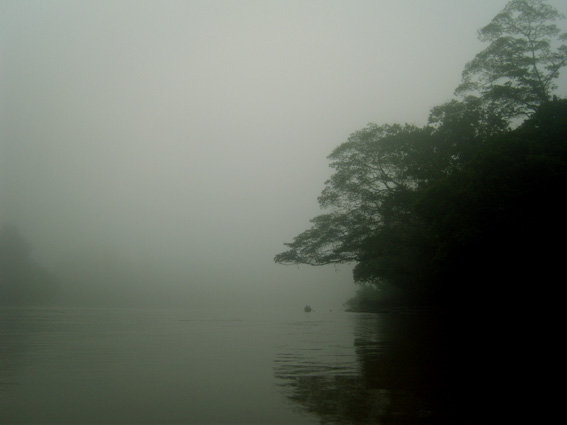|
Kalimantan
Tourism Destinations,Off
Road Kalimantan Adventure Tours, Dayak Culture
Trips, Extreme Adventure Trekking.Borneo Jungle Safari
Tours,Trek Expeditions,Kalimantan 4 Wheel Drive,Jungle Trekking,visit
Dayak tribe,Derawan Nabucco Dive & Jungle,wild
life
adventure, trip, borneo jungle, expedition tour, rain forest trek,
mountain
 X-TREME
BORNEO X-TREME
BORNEO K A L I M A N T A N
Expect
The Unexpected
|

KALIMANTAN
'S FLORA
& FAUNA
The
flora and fauna of Kalimantan’s montane and lowland forests
is amazing and each is an important genetic resource and wildlife
habitat. The "green gold" exploitation that began in the late
1960s has destroyed more then half its forests, but a turning point is
in process. Now the Indonesian government and the local people
understand the beauty and wealth of Kalimantan's tropical forests and
efforts are being made to preserve them.
Kalimantan’s
coastline features mangrove swamps and lowland rainforest. An inland
belt of gentle hills and alluvial plains mark the start of the deep
jungle. Towering Dipterocarpus trees, valuable ebony, and ironwood
trees are scattered throughout. More then a half of the
world’s hardwood tree species are here. Climbing rattan
palms, vines, orchids, ferns, and pitcher plants are also common.
The
wildlife is exotic and unusually diverse, with orangutans only found on
Sumatra and Borneo Islands, along with the endemic proboscis monkeys,
and other forest denizens including Malaysian sun bears, clouded
leopards, leaf monkeys, macaques, and pangolins. Many lizard varieties
and pythons live in Kalimantan’s jungles, while crocodiles
and the last freshwater dolphins on earth ply the rivers.
More
then 600 bird species make the Kalimantan forests their home, such as
the sun birds, pheasants, cockatoos, and spectacular hornbills. Also
many kinds of beautiful butterflies and metallic beetles, color this
world, along poisonous polypods, brightly colored millipedes, and giant
walking sticks.
Wildlife
spotting opportunities are the best in the heart of Kalimantan or in
the national parks or nature reserves. While seeing creatures in the
wild is never guaranteed, visitors can at least get a glimpse of their
habitats and experience their environment while waiting to see a rare
animal or bird. |
Kalimantan as a Tourism
Destination
Kalimantan
is divided into four provinces East, South, Central and West. It has a
total territory of 539,500 sq km, roughly 28% of Indonesia’s
total land area, but it has only 7% of the total population,
about 14 million.
Kalimantan
has an intriguing history of sultanates and traditional Dayak
tribes, with a wealth of ecological and cultural treasures that survive
deep within the rainforests of the world’s second/third
– instead of saying Indonesia’s largest island,
I’d say the world’s largest islands, but I
don’t remember which is it - largest island. With its legacy
of Chinese, Malay, Hindu, Muslim, and Dutch influences, there is a
virtual mosaic of traditions flourishing in the bustling seaports and
riverside cities to be discovered.
Despite
exploration and development, many areas of Kalimantan are still
untouched by the Western world. Tourist facilities are relatively
undeveloped and visitors are few. Many Westerners you meet are from the
oil and wood booms which began in the 1970s. Good roads are only found
near the big coastal cities (there are paved roads between Samarinda
and Banjarmasin and around Pontianak), but rivers are the main
transportation arteries.
There
is no volcanic activity here. The island’s central mountain
ranges heavily eroded over thousands of years and are separated by
broad river valleys. Kalimantan is crisscrossed by giant rivers
including the Mahakam, Barito, Kapuas, and the Kayan.
The
population of Kalimantan is diverse, thanks to the booming oil, coal,
gold and timber industries. Many Indonesians – along with
foreigners – have come to Kalimantan searching for work in
the last two decades. The native Dayak people live deeper inland along
the river banks throughout the interior. Each Dayak tribe has its own
dialect and culture, thriving as hunters and gatherers. Other
Indonesians consider the Dayaks to be backward because of their
previous headhunting and other animist customs. The truth is that they
are scrupulously honest by nature, though exposure to Christianity and
modern values has muted this trait.
Even
with today’s airstrips and boat connections, Dayak territory
is still among the most inaccessible on earth. Headhunting
doesn’t “officially” exist anymore,
though isolated jungle beheadings are still reported – are
you sure you want to put this on your website? - as a symbol par
excellence of the procreative power of nature, the traditional belief
being that a head can save a village from plague and evil spirits.
|
EAST
KALIMANTAN
The
province of East Kalimantan serves as a gateway to other
destinations on Kalimantan Island. Most destinations, such as the Dayak
settlements in the hinterland along the big rivers, can be reached from
here, moreover, a visit to Kalimantan does not seem complete without a
visit to East Kalimantan.The province of East Kalimantan occupies an
area of 211,440 square kilometres. It is the biggest province of
Indonesia since Irian Jaya has been officially divided into three. It
has a population of more than two million.The forests of East
Kalimantan contain a wealth of rare flora and
fauna. The black Orchid (Clogena pandurata), Nephents Amularia and
Rattan vines growing up to 200 meters long, grow in these forests. So
do various species of valuable tropical hardwoods.
Among
the animal species typical of Kalimantan, living in the forests
are chimpanzees (Pongee pygmaeus), bekantan (Nasalis Larvatus), Mahakam
fresh - water dolphins or pesut (Orcela fluminalis) and many bird
varieties.
The
cultural and artistic traditions of the island's indigenous Dayak
population are still preserved in this region, especially in the
hinterland of East Kalimantan. Sailing up the streams near the
Malaysian border, one can still meet Traditional Dayak settlements than
seem to have been little touched by the advent of modernity.
SOUTH KALIMANTAN
South Kalimantan province lies
at the southern end of island and is one of four provinces on
Kalimantan. This region known as the Land of a Thousand Rivers, Big and
small rivers, wide swamps and lowlands are characteristic of this
southern province. Some of those rivers, such as the Barito, Martapura
and Negara mark the boundary between South Kalimantan and the
neighboring Central Kalimantan with dense tropical rain forests and
covered mountainous sparsely inhabited territory. The southern region
is a coastal plain, lined by vast mangrove forests. This coastal area
is rich in fresh and salt-water fishes.Those three regions are
practically separated from each other by the Meratus mountain which
spread from the north to south through the center of the province. Many
villages and plantations lie along the Barito river course, which runs
from the north to south. Like most other regions in South Kalimantan
has two seasons, a dry and a rainy. The rainy season lasts from October
to April, and dry season from May to September. South
Kalimantan covers an area of about 37,000 square kilometers. The
population of South Kalimantan consists of two main groups: the Banjar
who live along the coasts and make up the majority, and the Dayaks who
inhabit the upstream regions of the rivers. The Banjar people
are devout Moslems. They are friendly, like to help one another, and
have a good sense of humor. They also are tolerant of other religions
and respect one another.The friendly attitude of the Banjar, and their
hospitality, tends to make visitors immediately feel at home in their
midst. The daily languages spoken by the Banjar people Malay and
Indonesian although in a distinct local dialect.
CENTRAL
KALIMANTAN
Central Kalimantan,
is 153,800 square kilometers large, covered with mostly jungle
(82 %), while swamps, rivers, lakes take approximately 2 % and
agriculture land is about 3 %. Palangkaraya is the capital of this
province, on the upper reaches of the Kahayan river.The northern area
is mountainous and reaches far into the hinterland, it is difficult to
reach. Transportation facilities are limited and much of the terrain is
rough. Many rapids are found here. The central area is dense and
fertile tropical forest. Almost four-fifths of Central Kalimantan is
made up of tropical forests, producing valuable commodities such as
rattan, resin and the best woods.
Central
Kalimantan is inhabited by two million people, the indigenous
inhabitants are the Dayaks, comprising the sub-tribes Ngaju, Ot Danum,
Ma'anyan Ot Siang, Lawangan, Katingan and others. Ot Olong-olong and
Penyawung people live in the upstream areas of the Barito and Mahakam
rivers. Their livelihood is hunting, moving from one region to another.
They have no fixed settlement. They adhere to the old
Kaharingan religion, which is a form of ancestor worship, mixed with
elements of animism and dynamism. The Ot Danum inhabit the upstream
regions of the Kahayan, Barito, Kapuas or Timbering Miri, in the
upstream reaches of the Kahayan river. They live in longhouses with
sometimes as many as 50 rooms. They are called "betang". The Sandung,
is a wooden building to keep the ashes of the family's dead, after
cremation. Generally, the bigger sandung belong to members of the
aristocracy, such as the descendants of chieftains. The smaller sandung
are called kariring. They are found at Tuwung, in the upstream area of
the Kahayan River. The roof of a sandung is ornamented with the enggang
(hornbill) or dragon motif. The enggang is a ruler's symbol. The dragon
is a symbol of the lower aristocracy, or of common people. Sandungs are
found in the upstream regions of the Kahayan river, at the villages of
Tuwung, Bukit Rawi (north of Palangkaraya) and Pohandut (near
Palangkaraya).
WEST
KALIMANTAN
West Kalimantan covers an area
of over 146.807 sq km, rich in a variety of minerals and precious
stones, and remains largely unexplored. Coastal areas are mainly swamp
lands with more than 100 rivers sculpting the flat plains. In the
mountainous eastern parts of the province, away from the city and
plains, there are many Dayak villages. The Dayaks have ancient
traditions and beliefs which are expressed in various forms; earlobes
elongated by heavy earnings, tattoos, intricate paintings, designs and
carvings and wonderful dances of respect, heroism, welcome
cure. West Kalimantan is easily accessible from Jakarta,
Semarang, Batam or Kucing at Sarawak by air. Boat and overland journeys
provide a rare opportunity to see the interior of one of the world's
largest and richest island West Kalimantan is an important and very
attractive province. It is rich in history, culture and places of
interest for the tourist. The province borders on Sarawak, East
Malaysia, to its west are the South China Sea and the Karimata Strait.
There is the well-known Muller mountain range in the east and the
Schwaner mountains in the southeast. Various valuable minerals are
found on and around those mountains, such as gold, mercury, manganese,
bauxite, gypsum and kaolin.
The lowland areas are found around Sambas, Pontianak and Ketapang, the
most important towns. Around these towns are the wide lowlands and
swamps.
West Kalimantan has a number of important rivers for the transportation
of goods and people. However, there are rivers that can be navigated
only during the rainy season, when the water is high. During the dry
season, these rivers run empty and cannot sailed. The most important
rivers are the Kapuas River, Sambas River, Sekayam River, Landak River,
Melawi River and Pawan River. There are floating houses
called bandung on those rivers. Bandung are not only houses, but also
important transportation means for the people. In it, they move from
place to place, sailing up and down the river, stopping at villages to
trade.
The hinterland of West Kalimantan is covered with jungle, and still not
much trodden by human beings. In the past decades, however, loggers
have come to exploit the province's timber resources. The West
Kalimantan jungle is rich in tropical hardwoods, rattan, candlenut
trees, and various raw materials for industrial and popular needs
|

|
©
PT.Gigantara 2007-2014
X-TREME
BORNEO Jl.Martadinata Raudah 1 no 21 Samarinda - East Kalimantan -
Indonesia Phone + 62 8125846578 Fax :+62 541
7778648
|
JOIN US FOR A ONCE IN A LIFE
TIME EXPLORATION OF THE KALIMANTAN TRAVEL DESTINATIONS AT INDONESIAN
BORNEO ISLAND
|
|



